BORDER ISSUES
Haitian migrants at United States border
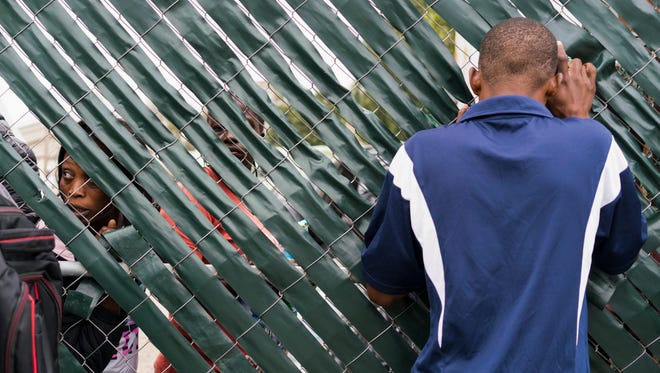
For several months, Arizona Republic and azcentral photographer Nick Oza has been photographing a surge of Haitian immigrants trying to reach the U.S. through Mexico. Most are coming from Brazil, where many Haitians migrated after the 2010 earthquakes. Many of the Haitian women are staying at the closed shelter at Desayunador Salesiano Padre Chava, in Tijuana, Mexico, where a man pictured here is locked outside. More than 7,000 Haitian refugees have amassed in Mexico, hoping to cross into the U.S. through the ports of entry, experts say.
Nick Oza/The Republic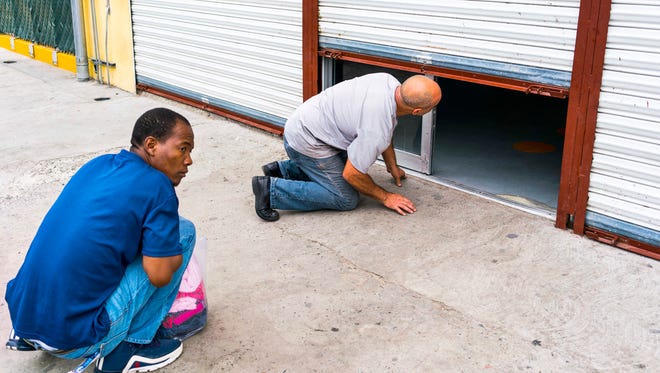
A Haitian migrant peers under the door of Desayunador Salesiano Padre Chava, a shelter for migrants in Tijuana. The shelter was closed and the man had knocked on the door hoping to get some food.
Nick Oza/The Republic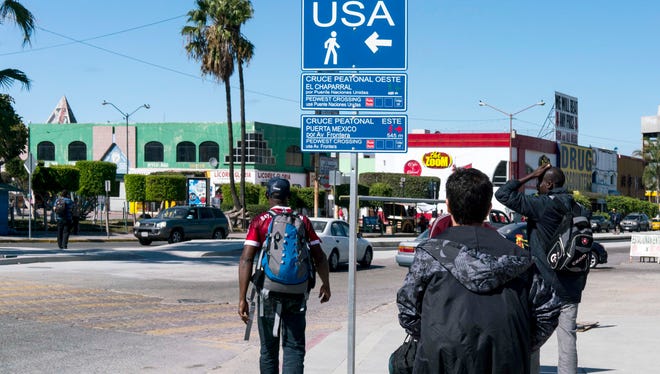
Haitian migrants walk towards the San Ysidro Port of Entry in Tijuana, Mexico, in October. They were scheduled to be interviewed by U.S. Customs and Border Protection officers in hopes of entering the U.S. even though they didn't have visas.
Nick Oza/The Republic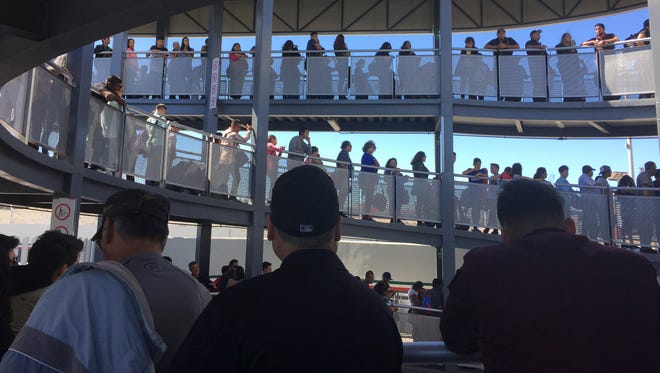
As Haitians wait in Mexico, long lines of workers form at the San Ysidro, Calif., port of entry border crossing between San Diego and Tijuana, Mexico, where the economy is booming on both sides of border.
Nick Oza/The Republic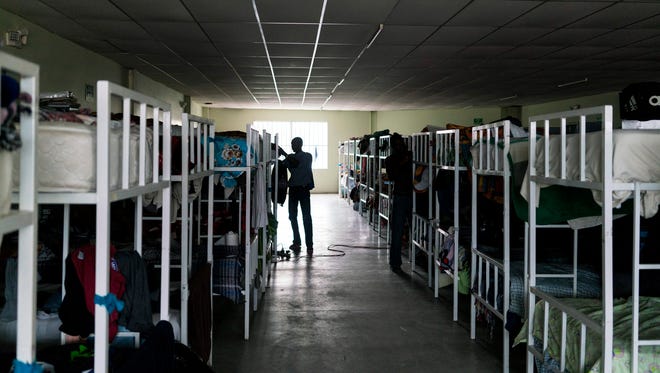
Haitian refugees come out from their shelter one October morning at Desayunador Salesiano Padre Chava, a shelter in Tijuana, Mexico. Most of them are waiting to come to U.S. through the port of entry in Tijuana.
Nick Oza/The Republic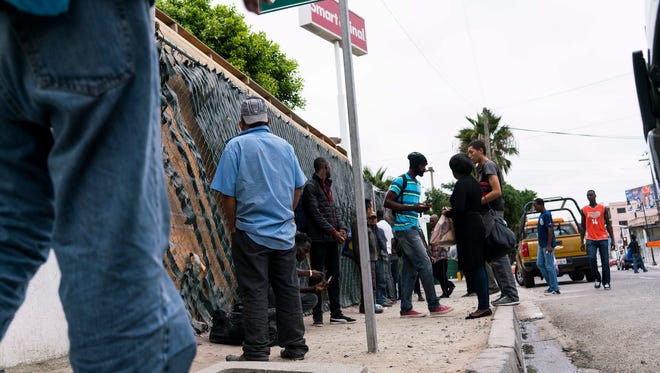
Mexican police guard the shelter after more than 5,000 Haitian refugees take shelter at Desayunador Salesiano Padre Chava, in Tijuana, Mexico, in October.
Nick Oza/The Republic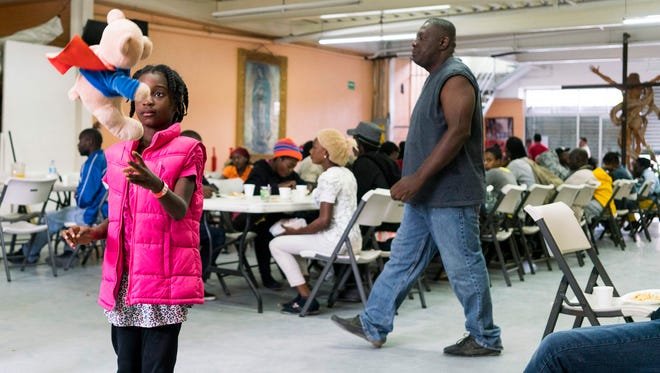
Haitian migrant children play with donated toys while their parents were having a free breakfast in October after they arrived in Tijuana, Mexico, at Desayunador Salesiano Padre Chava.
Nick Oza/The Republic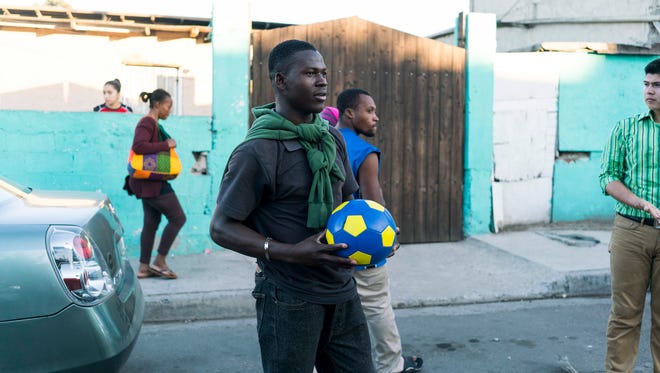
Latin American migrants headed for the U.S. have traveled through border cities in Mexico for decades, but this is the first time so many Haitians have arrived at one time. This Haitian man struck up a soccer game with some local guys in October on a street in Tijuana near a migrant shelter that has taken in hundreds of Haitian migrants hoping to cross into the U.S. through ports of entry without American visas.
Nick Oza/The Republic
Haitian migrants play dominos in October in Tijuana, Mexico at Desayunador Salesiano Padre Chava, a shelter where immigrants get free breakfast and some other necessities. Most of these Haitians coming from Brazil are trying to enter the United States.
Nick Oza/The Republic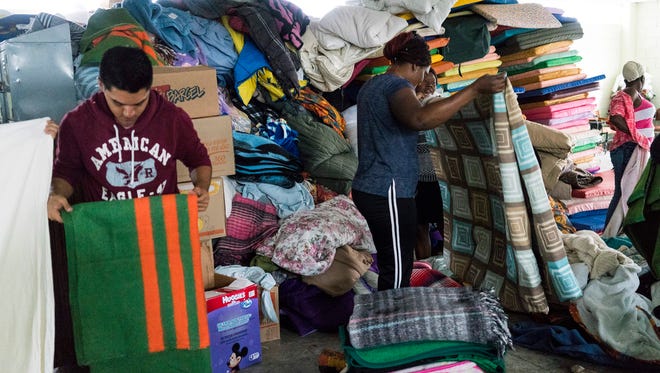
Haitian and Central American migrants put away their blankets after they wake up one October morning at Desayunador Salesiano Padre Chava, a shelter in Tijuana, Mexico.
Nick Oza/The Republic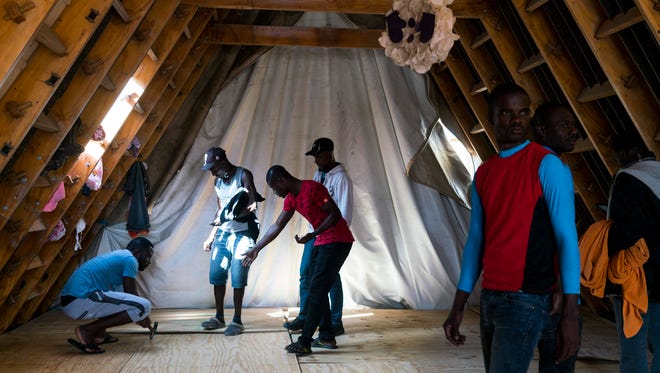
Haitian migrants are helping to build an addition onto the Desayunador Salesiano Padre Chava, a shelter in Tijuana, Mexico, which has been overwhelmed by migrants from Haiti and other countries hoping to enter the U.S. through a port of entry.
Nick Oza/The Republic
Volunteer doctors and nurses are asking Haitian migrants for any medical needs at Desayunador Salesiano Padre Chava, in Tijuana, Mexico. Thousands of Hatians hope to enter the U.S. through a port of entry.
Nick Oza/The Republic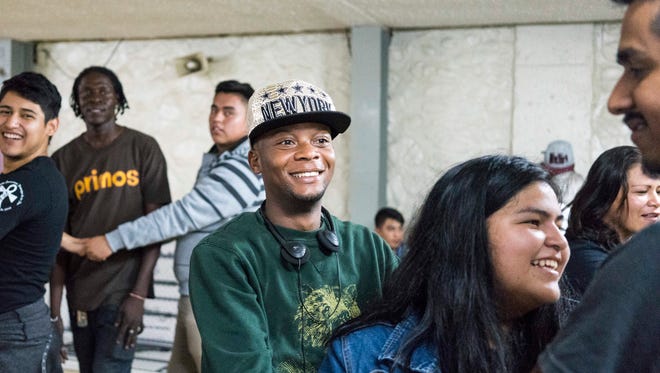
Haitian migrant Garry Clema is wearing a New York hat and singing with other migrants at Tijuana’s Casa del Migrante shelter for migrants, in Tijuana, Mexico, in October.
Nick Oza/The Republic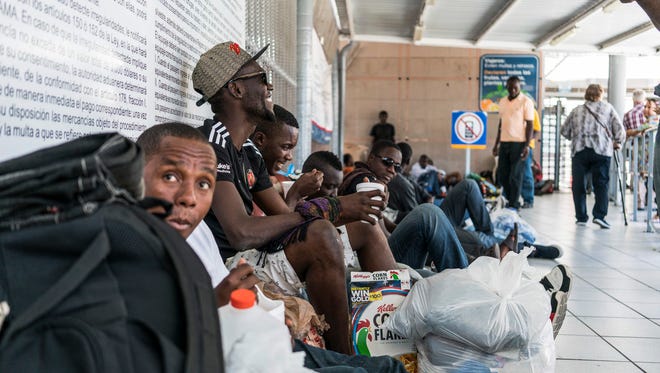
By late October, Haitian migrants were arriving in Nogales, Sonora, lining the floor of the DeConcini port of entry in Nogales, Sonora, hoping to speak with U.S. Customs and Border Protection officers. Larger numbers of Haitians, coming from Brazil, have been arriving at ports in hopes of entering the U.S. on humanitarian parole.
Nick Oza/The Republic
Lemoine Denera, 32, and his wife, Aline Sainaly Denera, 27, are among the many Haitian migrants who began arriving in Noglaes, Sonora, in early December. They passed through 10 countries and took turns holding their baby daughter, Leina, who was less than 2 months old when they left. In Panama, a tree branch hit Leina in the head. The girl "cried and cried," Lemoine said, but he wasn't able to take her to a doctor to see if she was OK.
Nick Oza/The Republic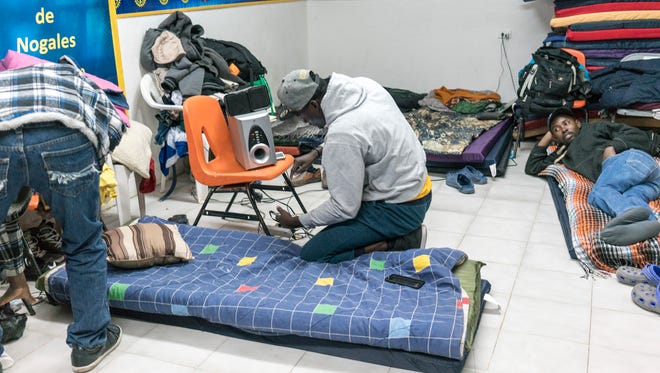
Newly arrived Haitians in Nogales, Sonora, in early December. They slept on vinyl mats on the floor of the Rotary Club, which has been converted into a shelter for Haitian migrants hoping to cross into the U.S.
Nick Oza/The Republic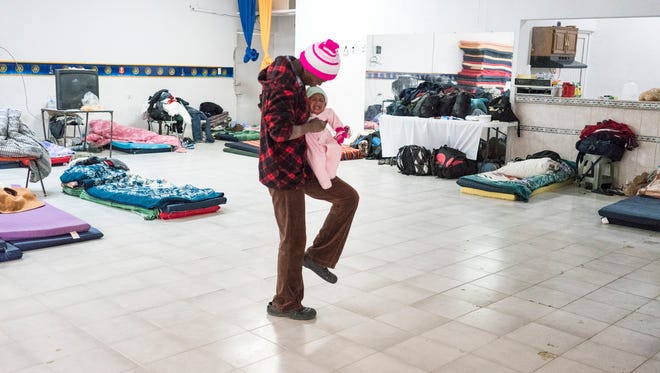
Aline Sainaly Denera, 27, traveled more than 5,000 miles from Brazil through 10 countries to reach the U.S-Mexico border carrying her baby girl, who was 2 months old when they left. She and her husband, Lemon Denera, 32, are from Haiti and moved to Brazil after the 2010 earthquake. But after the economy in Brazil collapsed, they decided to join thousands of Haitians leaving Brazil in hopes of crossing into the U.S. through ports of entry. After arriving in Nogales, Sonora, they slept on vinyl mats on the floor of the Rotary Club, which has been converted into a shelter for Haitian migrants hoping to cross into the U.S.
Nick Oza/The Republic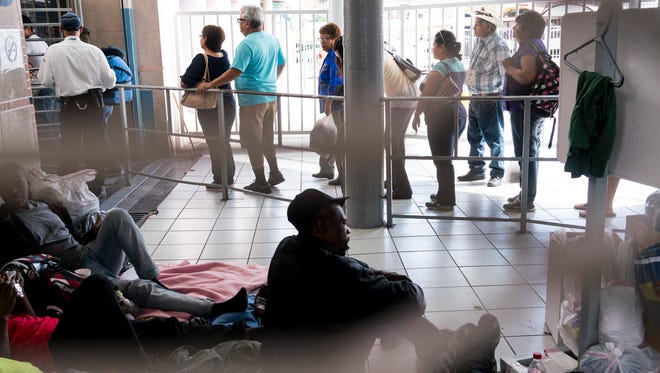
Haitian migrants line the floor of the DeConcini port of entry in Nogales, Sonora, in October, hoping to speak with U.S. Customs and Border Protection officers. Larger numbers of Haitians, coming from Brazil, have been arriving at ports in hopes of entering the U.S. on humanitarian parole. After a wave of migrants from Central America arrived, U.S. Immigration and Customs Enforcement officials have released 900 Haitian nationals due to a lack of detention space.
Nick Oza/The Republic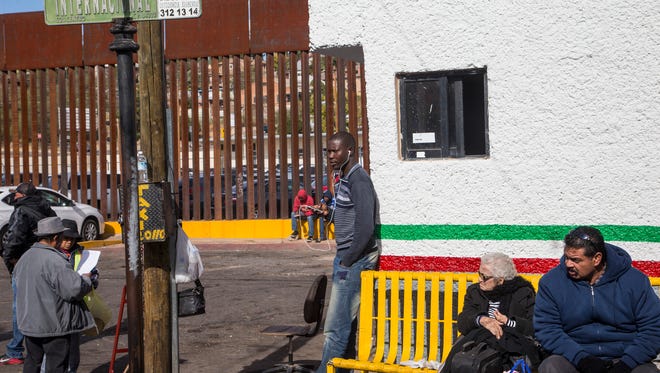
A Haitian migrant stands near the border fence in Nogales, Sonora, where the streets of Nogales, Arizona, can be seen through the slats. Between 200 and 250 Haitian migrants have arrived in this border city since October, hoping to cross through the port of entry into the U.S. without American visas.
Nick Oza/The Republic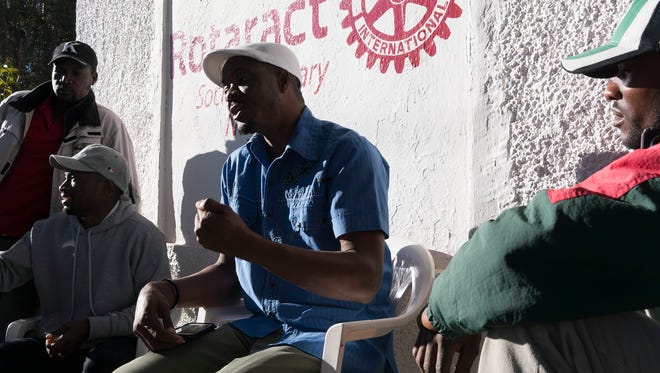
Haitian nationals near the port of entry in Nogales, Sonora, Mexico, and Nogales, Arizona, wait for days to get an appointments with U.S. immigration agents for entry into the U.S. As a result of the Haitian influx and a continuing surge of Central Americans on the Texas-Mexico border, the U.S. government has run out of detention space.
Nick Oza/The Republic
Jan Frantz, 25, a Haitian migrant, was working at a perfume factory in Brazil before deciding to try to cross into the U.S., where he has an uncle in West Palm Beach, Fla. He had been sleeping at the San Juan Bosco migrant shelter in Nogales, Sonora, in early December, trying to decide whether to risk being deported back to Haiti by crossing into the U.S. or staying in Mexico. He was befriended by some local women who bring the Haitian migrants food.
Nick Oza/The Republic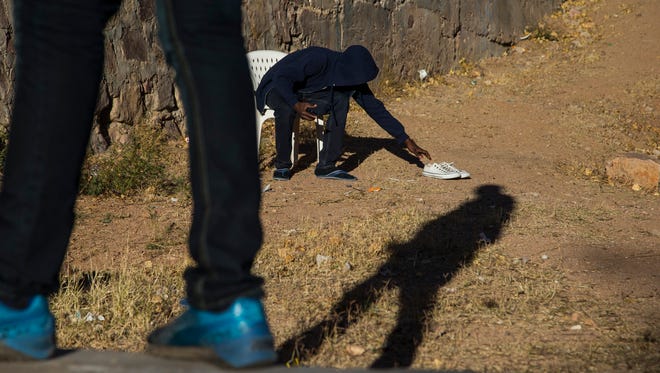
These Haitian migrants at the Rotary Club in Nogales, Sonora, in December are among 30 or so hoping to cross into the U.S. through a port of entry.
Nick Oza/The Republic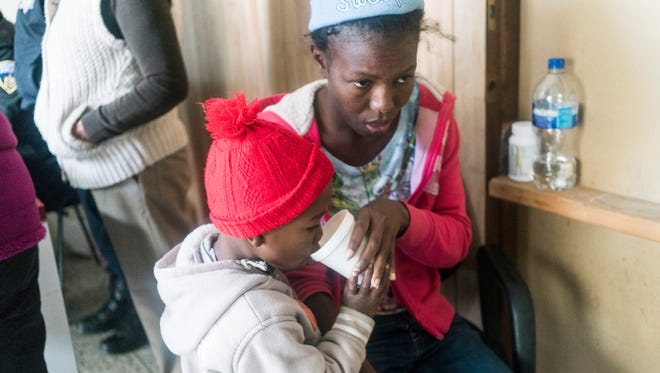
Modeline Joseph, 22, a Haitian migrant, traveled to Nogales, Sonora, with her 4-year-old son, Andres Sebastian, from Venezuela, where she had been living since 2009. She said the boy's father had been killed in Venezuela, and now she was hoping to cross into the U.S. through the port of entry in Nogales, and then head to New Jersey, where an uncle lives.
Nick Oza/The Republic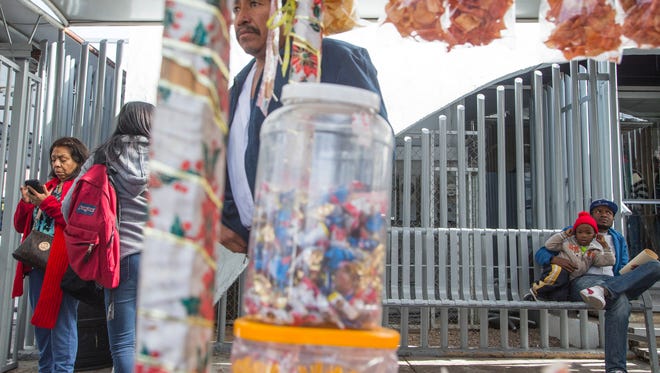
Haitian national Jean-Claude Wilmick, 30, takes care of 4-year-old Andres Sebastian outside the Mexican immigration office in Nogales, Sonora, Mexico. Around 30-plus Haitians waiting to cross United States are asking for asylum in the U.S., but most of them likely will be deported back to Haiti.
Nick Oza/The Republic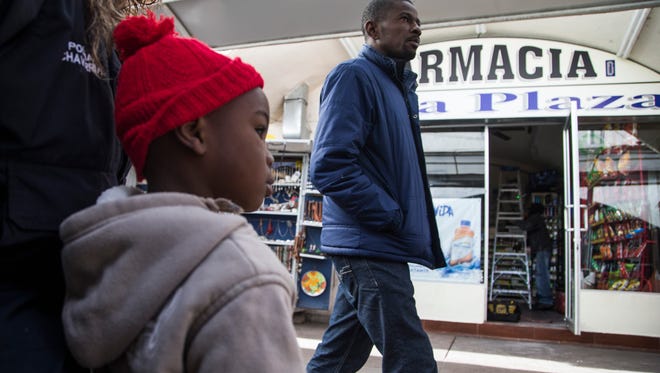
A Haitian migrant stands near the U.S. port of entry in Nogales, Sonora, in December. Between 200 and 250 Haitian migrants have arrived in this border city since October, hoping to cross through the port of entry into the U.S. without American visas.
Nick Oza/The Republic
Lemoine Denera, 32, traveled to Nogales, Sonora from Brazil hoping to cross into the U.S. But after learning that the U.S. has resumed deportations to Haiti, his homeland, Denera was afraid if he entered he would be separated from his wife and 4-month-old daughter and quickly deported to Haiti. After agonizing for days, he and his family entered the U.S. The Republic did not know their fate by the time this photo was published.
Nick Oza/The Republic